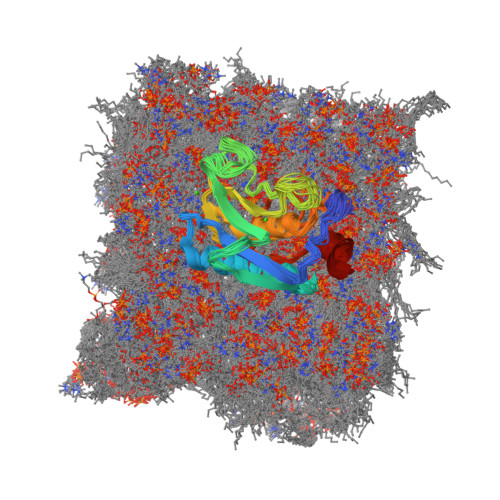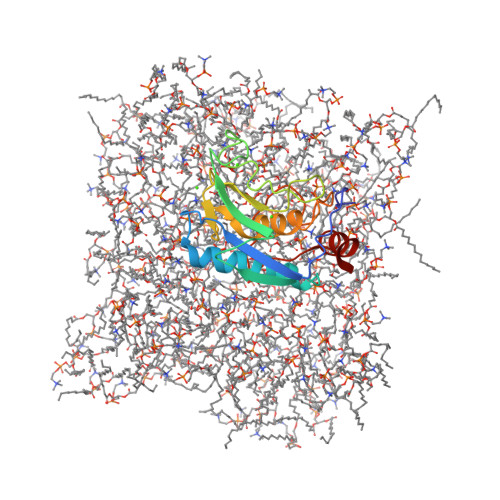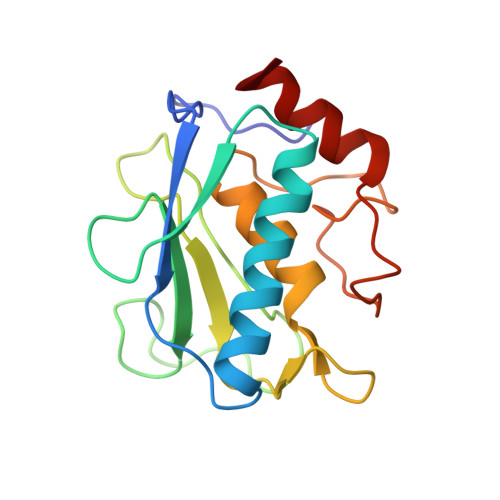Ambidextrous binding of cell and membrane bilayers by soluble matrix metalloproteinase-12.
Koppisetti, R.K., Fulcher, Y.G., Jurkevich, A., Prior, S.H., Xu, J., Lenoir, M., Overduin, M., Van Doren, S.R.(2014) Nat Commun 5: 5552-5552
- PubMed: 25412686
- DOI: https://doi.org/10.1038/ncomms6552
- Primary Citation of Related Structures:
2MLR, 2MLS - PubMed Abstract:
Matrix metalloproteinases (MMPs) regulate tissue remodelling, inflammation and disease progression. Some soluble MMPs are inexplicably active near cell surfaces. Here we demonstrate the binding of MMP-12 directly to bilayers and cellular membranes using paramagnetic NMR and fluorescence. Opposing sides of the catalytic domain engage spin-labelled membrane mimics. Loops project from the β-sheet interface to contact the phospholipid bilayer with basic and hydrophobic residues. The distal membrane interface comprises loops on the other side of the catalytic cleft. Both interfaces mediate MMP-12 association with vesicles and cell membranes. MMP-12 binds plasma membranes and is internalized to hydrophobic perinuclear features, the nuclear membrane and inside the nucleus within minutes. While binding of TIMP-2 to MMP-12 hinders membrane interactions beside the active site, TIMP-2-inhibited MMP-12 binds vesicles and cells, suggesting compensatory rotation of its membrane approaches. MMP-12 association with diverse cell membranes may target its activities to modulate innate immune responses and inflammation.
Organizational Affiliation:
Department of Biochemistry, University of Missouri, 117 Schweitzer Hall, Columbia, Missouri 65211, USA.





















